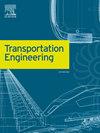Analysis of electric vehicle charging behaviour in existing regional public and workplace charging infrastructure: A case study in the North-East UK
Q1 Engineering
引用次数: 0
Abstract
Public and workplace charging infrastructure plays an important role in supporting electric vehicle (EV) adoption by relieving range anxiety, increasing vehicle utility, and providing charging access for users without home chargers. While previous studies have examined public and workplace charging infrastructure, limited research has explored the impact of charging type and location on charging behaviour using real-world data collected from regional use cases. To address this gap, this study analyses 327,910 real-world charging events from the North-East of the UK to examine the relationship between public and workplace charging infrastructure and EV users' charging behaviours. The results revealed that rapid chargers located in central shopping centres, suburban activity centres, and leisure venues are preferred by EV users with higher usage frequency but still require improved utilisation to achieve commercial viability. Slow and fast chargers’ plug-in time far exceeds the energy delivery duration as they are primarily used for parking rather than charging, suggesting re-introducing parking fees at these chargers may be beneficial. Public on-street and off-street chargers have low usage frequencies, therefore, offering free parking based on demand might increase their utilisation. Workplace chargers exhibit longer plug-in time but lower usage frequency during afternoon peak hours, highlighting the need for strategies such as smart metering and time-of-use pricing to reduce grid pressure. These insights contribute to policy recommendations for optimising public and workplace charging networks to support sustainable EV adoption at the regional level.
求助全文
约1分钟内获得全文
求助全文
来源期刊

Transportation Engineering
Engineering-Automotive Engineering
CiteScore
8.10
自引率
0.00%
发文量
46
审稿时长
90 days
 求助内容:
求助内容: 应助结果提醒方式:
应助结果提醒方式:


